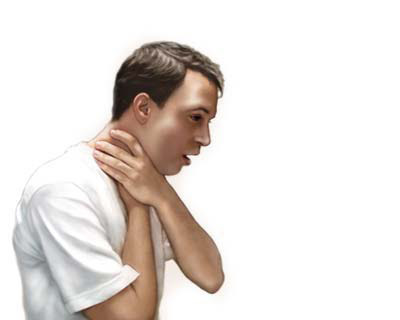First Aid methods and procedures for Medical Emergency

First Aid consists of series of simple and in some cases, potentially life-saving techniques that an individual can be trained to perform with minimal equipment. While in many cases proper equipment and professional medical care will be necessary to save lives, when such help is not immediately available you will have to manage the situation to the best of your understanding. Therefore it is important for all of us to know simple facts of first aid under different emergency situations.
Here are a few First Aid methods for some of the most common Emergency situations.

Follow these steps in such a situation.
- Tap and shout to see if the person responds. Check if the person is breathing.
- If he/she is not responding and not breathing, send a bystander to call the ambulance.
- Kneel at the side of the victim, position him on his back on a firm flat surface and begin chest compression.
- To begin chest compression place your hands on your centre of the breastbone. With your hands in place, position yourself so that your shoulders are directly over your hands and your elbows are locked. Press the patient’s chest down to a depth of approximately 2 inches and then release it, keeping a smooth rhythm, Compress the patient’s chest at least 30 times.
- Then tilt the head back, lift the chin, pinch the nose shut and give 2 slow breaths until the chest gently rises.
- DO NOT tilt the head If you suspect a neck injury, in such a case place the thumb on one end of the jaw and the middle or ring finger on the other. Push the jaw forward. This opens the airway and helps to keep the tongue from covering from back of the throat.
- Repeate 5 cycles of 30 breast compressions and 2 breaths over a periods of 2 minute. Continue this until medical help arrives or till you transport the patient to hospital.

- Stand behind that person and wrap your arms around his wrist.
- Place the thumb on the side of your fist against the middle of his abdomen just above the naval.
- Give quick, inward and upward thrusts, repeat these thrusts until the object in the airway is cleared. Stop the procedure immediately if the person becomes unconscious.
- Support the head of the infant and place the head lower than trunk.
- Give 5 blows with the palm of your hand on the back between the shoulder blades.
- Then turn the infant face up. Place the two fingers on the breastbone between the nipples and give 5 chest thrusts. Continue 5 back blows and chest thrusts till the foreign body is expelled. Stop the procedure if the child becomes unconscious.

- Convence the victim to stop activity and help him to rest comfortably. If he has a know case of heart disease and if his doctor has prescribed medicine like aspirin or sorbitrate you can give it to him. Shift the patient to the hospital as soon as possible.
- In case the patient stops breathing or his heart stops beating administer CPR as explained erlier.

- Shift the patient to a hospital as soon as possible.
- Do a CT scan of the brain. Medication needs to be given to dissolve the clot in the brain if there is one.

- If a Diabetic patient is feeling out of sorts or is drowsy first check the blood glucose level if you have a glucometer. In case you do not have a glucometer, assume that the patient has a low blood sugar level in case he is drowsy.
- If he is conscious you can give him a sweetened drink, glucose or something sweet to eat. If this improves his condition then it means that his blood sugar level were low causing drowsiness.
- In case the patient is unconscious then do not give him anything to eat or drink. Instead put some glucose under his lips and see if his condition improves. If his condition does not improves take him to a hospital as soon as possible.

- help the victim to lie down or to get comfortable. Cover the wound with a sterile cloth. Apply firm pressure over the wound using a gauze bandage or dressing. Elevate the bleeding part, unless there is pain due to a fracture.
- Splinting an injury prevents further movement of the injured part and hence provides pain relief. Splint an injury in the position you find it.
- Splint the injury area and the joints above and below the injury.
- Folded blankets, towels pillows and a triangular bandage tied as a sling or folded as a cravat can be used as soft splints.
- Check for feeling, warmth and color before and after applying the splint.

- Immedeately stop the current/main switch and remove the victim away from electric wire with the help of a wooden/rubber object. Be careful while dragging the victim away from the current as you also have the risk of getting the shock.
- Examine the victim for breathing and beating heart.
- If the heart is not beating or the victim is not breathing, perform CPR as explained earlier.
- In the event of major fire, try to stop the fire with the help of a blanket or thick cloth to be covered on the victim.
- Dont pour water over the victim as the generated steam creates more damage.
- Remove the burnt cloths, shoes, socks, jewels etc. as their removal later shall cause more wounds.
- For 1st degree burns. keep the affected part dip in cold water for up to an hour or till the burning sensation subsides.
- Never break the blisters as it may cause infections.
- Get hospital care in 2nd/3rd degree burns for further care.